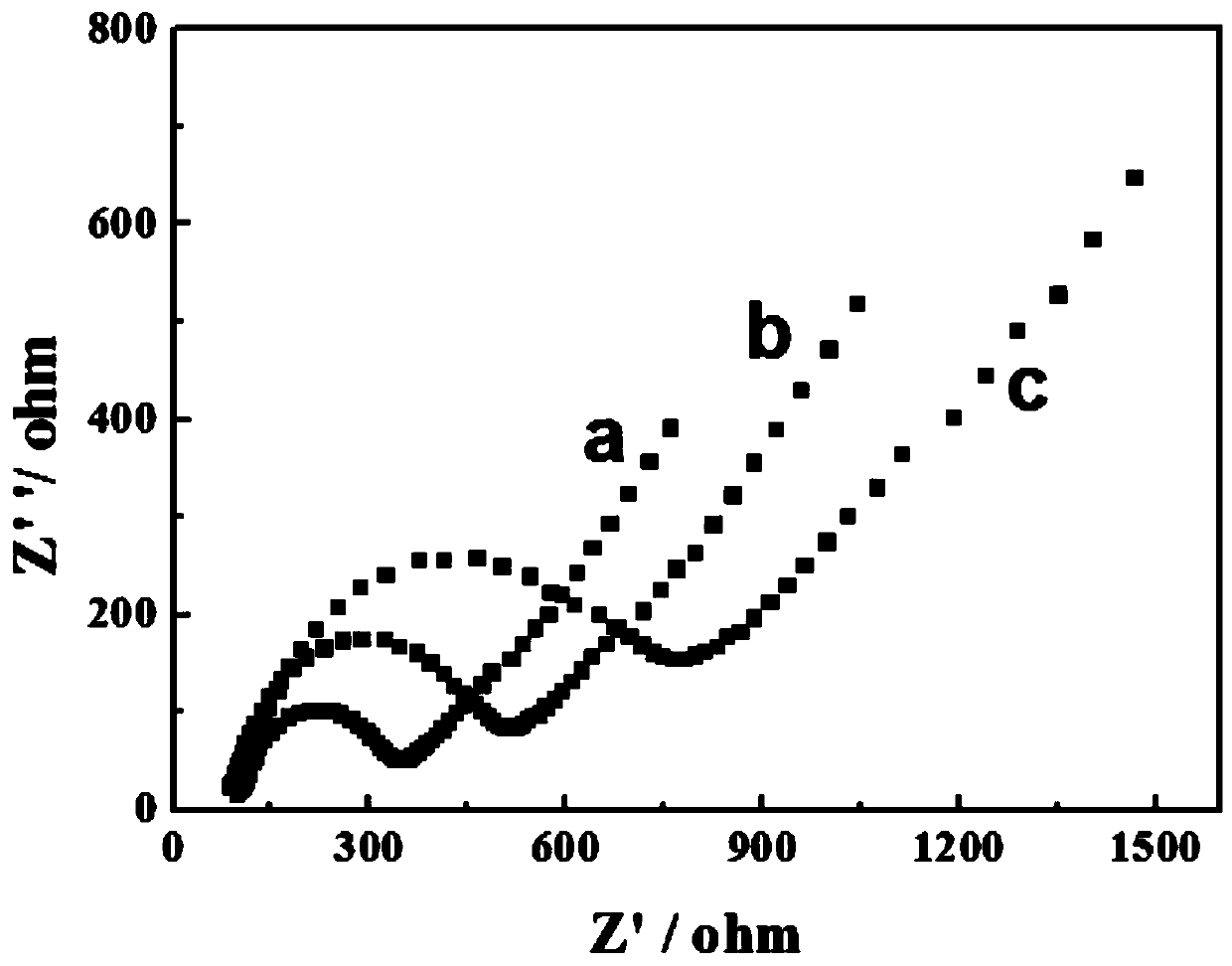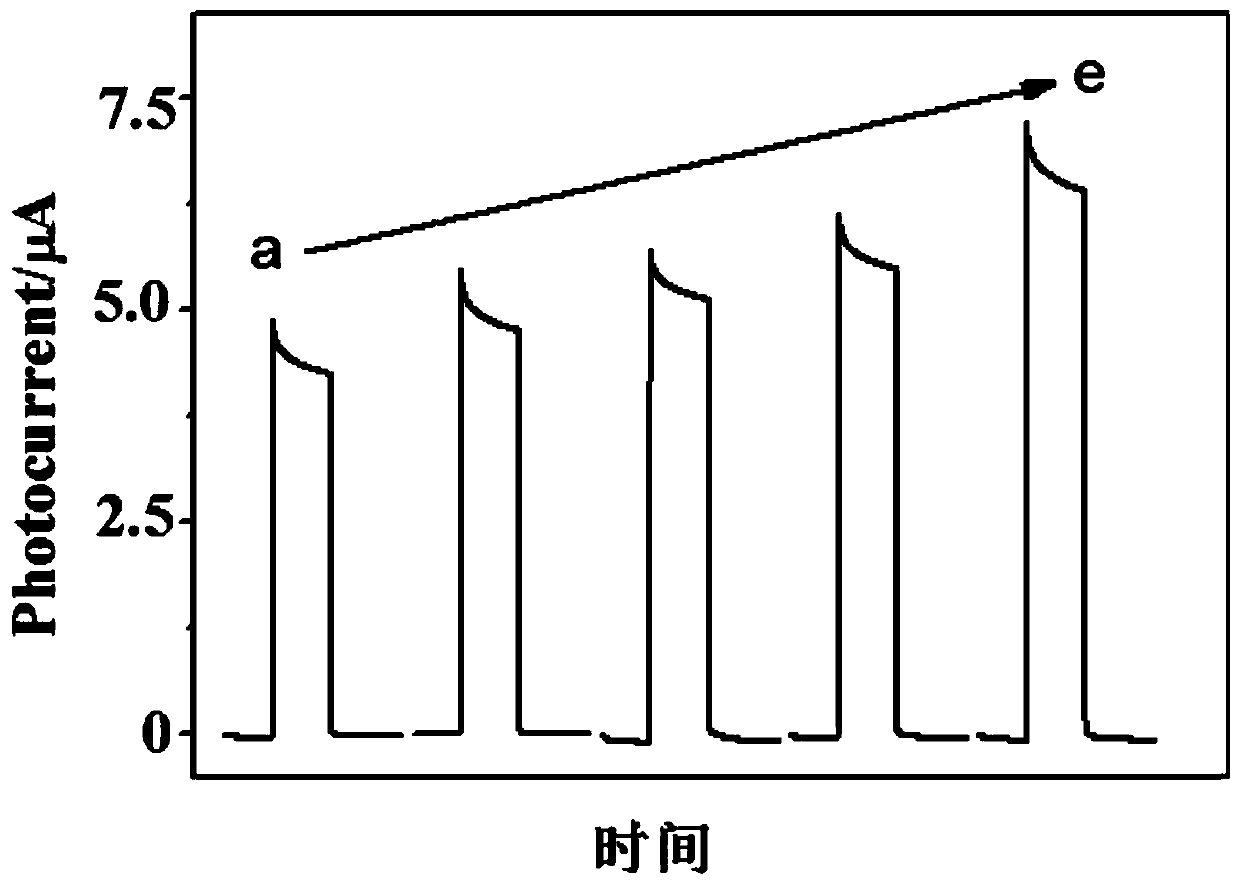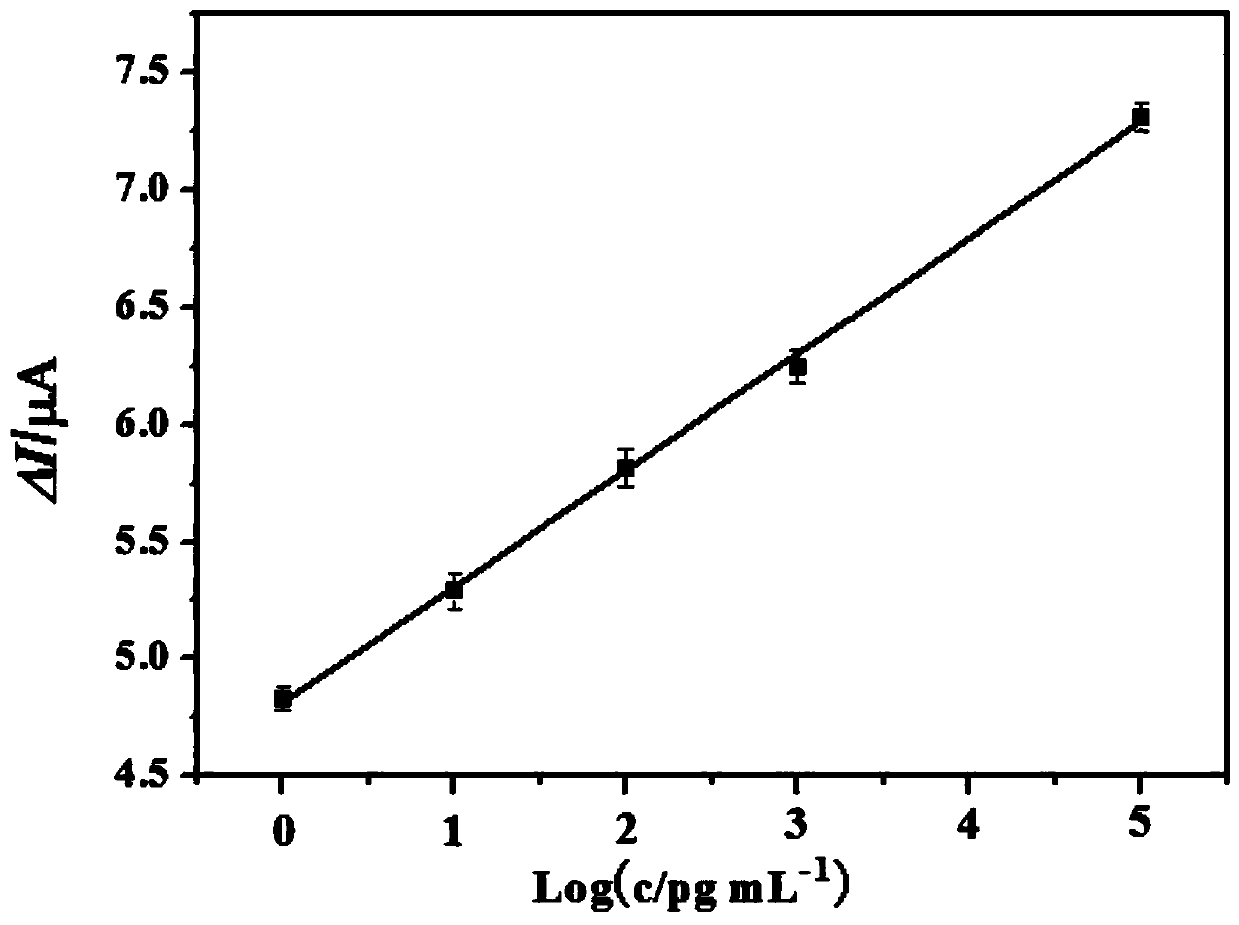Photoelectric-chemical-sensor-based method for detecting organophosphorus residues
An organophosphorus and carboxyl group technology is applied to the preparation of water-soluble amino cadmium telluride/carboxy cadmium telluride quantum dot composite materials, and the preparation of organophosphorus hydrolase photoelectrochemical sensors, which can solve the problems of low photoelectric efficiency and the like, and achieve the The method is simple, the photocurrent is stable, and the time required for detection is saved.
- Summary
- Abstract
- Description
- Claims
- Application Information
AI Technical Summary
Problems solved by technology
Method used
Image
Examples
Embodiment 1
[0034] A water-soluble carboxyl cadmium telluride quantum dot (CdTe-COOH QDs) solution, the synthesis steps are as follows:
[0035] Under nitrogen protection, add 0.6 mmol CdCl to a 250 mL three-neck round bottom flask successively 2 , 1 mmol 3-mercaptopropionic acid and 100 mL double-distilled water, and magnetically stirred to mix evenly to obtain a mixed solution; use 1.0 mol·L -1 NaOH solution to adjust the pH value of the mixed solution to 11.5; add 120 mg NaBH 4 , reacted for 1h; then added 0.06 mmol Na 2 TeO 3 , N 2 React under protection for 6 h. Cool the solution obtained from the reaction to room temperature, centrifuge with a 5kD ultrafiltration tube (to concentrate and purify the quantum dot solution) to obtain a water-soluble CdTe-COOH quantum dot solution with an average diameter of 4-5nm, and store it at 4°C for later use.
Embodiment 2
[0037] A water-soluble amino cadmium telluride quantum dot (CdTe-NH 2 QDs) solution, the synthesis steps are as follows:
[0038] Under nitrogen protection, add 100 mL of 12 mmol·L to a 250 mL three-neck round bottom flask successively -1 CdCl2 solution, 3.6 mmol mercaptoethylamine, magnetically stirred and mixed uniformly to obtain a mixed solution; add 100 mg NaBH 4 , reacted for 1h; then added 0.06 mmol Na 2 TeO 3 , N 2 React under protection for 1 h. Cool the solution obtained from the reaction to room temperature, and centrifuge with a 5kD ultrafiltration tube (to concentrate and purify the quantum dot solution) to obtain water-soluble CdTe-NH 2 Quantum dot solution, the average diameter of quantum dots is 2-3nm, stored at 4°C for future use.
Embodiment 3
[0040] A CdTe-NH 2 / CdTe-COOH QDs composite material, the synthesis steps are as follows:
[0041] In the CdTe-COOH quantum dot solution that 0.1mL embodiment 1 obtains, add 0.1mL containing 10mg·mL -1 1-(3-Dimethylaminopropyl)-3-ethylcarbodiimide hydrochloride and 20mg•mL -1 Mix the N-hydroxysuccinimide evenly, and let it stand at 37° C. for 1 h to obtain solution I; mix the solution I with 0.6 mL of the CdTe-NH obtained in Example 2 2 The QDs solution was mixed evenly, and stood at 37°C for 20 hours to obtain solution II; the solution II was centrifuged and washed 3 times, and diluted to 2 mL with twice distilled water to obtain CdTe-NH 2 / CdTe-COOH QDs composites.
[0042] Regarding this step, the CdTe-NH 2 The optimal volume of QDs solution can be determined by examining the photocurrent response of different sensors and the CdTe-NH 2 The relationship curve of the volume of QDs solution is determined: in the range of 0.1-0.6mL, with the CdTe-NH 2 As the volume o...
PUM
| Property | Measurement | Unit |
|---|---|---|
| diameter | aaaaa | aaaaa |
| diameter | aaaaa | aaaaa |
Abstract
Description
Claims
Application Information
 Login to View More
Login to View More - R&D Engineer
- R&D Manager
- IP Professional
- Industry Leading Data Capabilities
- Powerful AI technology
- Patent DNA Extraction
Browse by: Latest US Patents, China's latest patents, Technical Efficacy Thesaurus, Application Domain, Technology Topic, Popular Technical Reports.
© 2024 PatSnap. All rights reserved.Legal|Privacy policy|Modern Slavery Act Transparency Statement|Sitemap|About US| Contact US: help@patsnap.com










